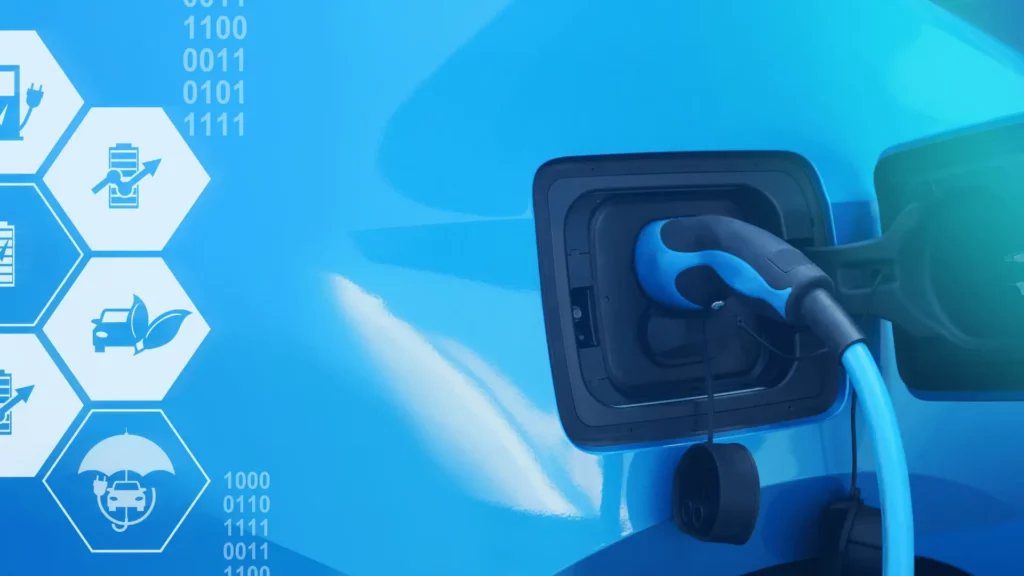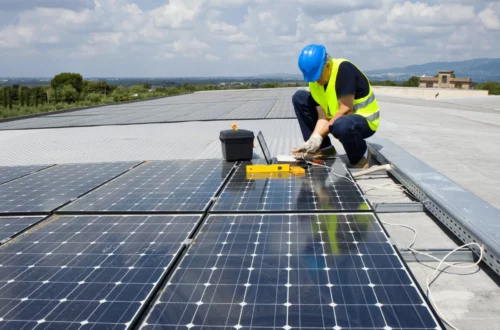Revving up for Sustainability: Pros and Cons of Electric Cars on the Environment

Are electric cars the game-changers we need to revolutionize our approach to sustainable transportation? Or do they come with their own set of environmental challenges? As the world gears up for a greener future, the pros and cons of electric cars on the environment have become a hot-topic debate. In this article, we dive into the intricacies of this issue and shed light on the various aspects surrounding it.
Imagine driving down the street, zero emissions clouding the air, and the soothing hum of an electric motor propelling you forward. Sounds idyllic, doesn’t it? Electric cars promise a cleaner, greener future by reducing greenhouse gas emissions and reliance on fossil fuels. But does this mean they are perfect? Not quite. While electric vehicles offer tremendous environmental benefits, they also present some unique challenges.
In this article, we’ll explore the pros and cons of electric cars on the environment, providing you with an in-depth understanding of their impact. We’ll examine the reduction in emissions, the lifecycle analysis, and the potential strain on the power grid. Additionally, we’ll cover the manufacturing process, battery disposal, and the overall sustainability of these vehicles.
Understanding the Environmental Impact
When it comes to the environmental impact of electric cars, it’s important to analyze both the positives and negatives. Let’s delve into the details and examine the various aspects that contribute to the overall sustainability of electric vehicles.
Whether electric cars are truly the game-changers we need to revolutionize our approach to sustainable transportation is a topic of much discussion. While they offer the promise of a cleaner, greener future by reducing greenhouse gas emissions and minimizing reliance on fossil fuels, it is important to consider the potential environmental challenges that come with them.
One of the key advantages of electric vehicles is the significant reduction in emissions compared to traditional gasoline-powered cars. By utilizing electricity as a power source, electric cars produce zero tailpipe emissions, helping to improve air quality and combat climate change. This reduction in emissions is particularly crucial in densely populated areas where the impact of vehicle pollution is most apparent.
However, it’s crucial to assess the entire lifecycle of an electric car to fully understand its environmental impact. From the manufacturing process to battery disposal, each stage requires careful consideration. The production of electric vehicles involves the extraction and processing of raw materials such as lithium, cobalt, and nickel, which can have negative environmental consequences if not managed responsibly. Additionally, the disposal and recycling of batteries present challenges, as improper handling can lead to hazardous waste and potential pollution.
The sustainability of electric vehicles also relies on the overall energy mix of the region or country in which they are operated. If the energy is primarily generated from fossil fuels, the environmental benefits of electric cars may be diminished. However, as more renewable energy sources, such as solar and wind, are integrated into the power grid, the impact of electric vehicles will become even more positive.
Also read: Why Can’t Electric Cars Charge Themselves: Understanding the Challenges
Benefits of Electric Cars on the Environment
Electric cars, also known as electric vehicles (EVs), have gained significant popularity in recent years due to their positive impact on the environment. Here are some of the key benefits of electric cars on the environment:
1. Reduction in Greenhouse Gas Emissions: One of the most significant environmental advantages of electric cars is their lower greenhouse gas emissions compared to traditional gas-powered vehicles. EVs produce zero tailpipe emissions, which means they do not emit harmful pollutants like carbon dioxide (CO2), nitrogen oxides (NOx), and particulate matter (PM) that contribute to air pollution and climate change. According to the International Energy Agency (IEA), the transport sector is responsible for a significant portion of global CO2 emissions, and shifting to electric cars can help reduce these emissions significantly.
2. Energy Efficiency: Electric cars are known for their higher energy efficiency compared to internal combustion engine (ICE) vehicles. Traditional gas-powered cars waste a significant amount of energy through heat dissipation, whereas electric cars convert most of the energy from the grid into forward motion. This energy efficiency results in reduced energy consumption and fewer overall emissions.
3. Renewable Energy Integration: Electric cars can play a vital role in promoting the integration of renewable energy sources into the electricity grid. By charging EVs with electricity generated from renewable sources such as solar panels or wind turbines, we can further reduce dependency on fossil fuels and decrease the overall environmental impact of transportation.
4. Reduced Air Pollution: EVs not only curb greenhouse gas emissions but also help in reducing air pollution. By eliminating tailpipe emissions, electric cars contribute to cleaner air in urban areas, which can have a positive impact on public health. Research by the International Council on Clean Transportation (ICCT) suggests that the use of electric vehicles can help mitigate the adverse health effects caused by poor air quality, especially in densely populated cities.
5. Lower Noise Pollution: Another lesser-known environmental benefit of electric cars is their quieter operation compared to conventional vehicles. Electric motors produce significantly lower noise levels, which can help reduce noise pollution in urban areas and improve overall living conditions.
Also read: Do Electric Cars Have Alternators? Explained!
Evaluating the Drawbacks of Electric Cars
As electric cars gain popularity as a sustainable transportation alternative, it’s important to consider the potential drawbacks they may have on the environment. While electric cars offer numerous benefits, they also present challenges that need to be addressed. Let’s take a closer look at some of the potential drawbacks of electric cars:
1. Limited Range and Charging Infrastructure:
Electric cars typically have a shorter range compared to their gas-powered counterparts. While modern electric vehicles (EVs) have made significant improvements in range, they may still require more frequent charging, especially during long road trips.
The availability of charging infrastructure can also be a challenge. While charging stations are becoming more widespread, the infrastructure is not as extensive as traditional gas stations, making charging less convenient for some users.
2. Upfront Cost:
Electric cars generally have a higher upfront cost compared to conventional gas-powered vehicles. This higher cost can be attributed to the expensive battery technology used in EVs.
However, it’s important to note that the cost of electric cars is gradually decreasing as technology advances and economies of scale are realized.
3. Battery Life and Disposal:
Lithium-ion batteries, the most common type used in electric cars, have a limited lifespan. Over time, the battery’s capacity may decline, resulting in a decrease in the vehicle’s driving range.
Disposing of spent batteries poses an environmental challenge. Proper recycling and disposal of lithium-ion batteries are crucial to prevent potential pollution risks.
4. Energy Source:
While electric cars produce zero tailpipe emissions, the production of electricity may rely on fossil fuel sources. If the energy used to charge electric cars comes from coal-fired power plants, the overall environmental benefit may be reduced.
To fully reap the environmental advantages of electric vehicles, it’s important to prioritize renewable energy sources such as solar, wind, and hydropower in electricity production.
5. Raw Material Extraction:
The production of electric vehicle batteries requires extracting raw materials such as lithium, cobalt, and rare earth elements. Mining these resources can have significant ecological impacts, including habitat destruction and water pollution.
It is crucial for the industry to develop sustainable practices for sourcing these materials, as well as promoting the recycling and reuse of batteries to minimize environmental harm.
Also read: Can Solar Panels Charge an Electric Car?
Recycling and Waste Management
As the world transitions towards a more sustainable future, recycling and waste management play a vital role in the lifecycle of electric cars. Let’s explore how these practices contribute to the overall environmental impact of electric vehicles.
1. Battery Recycling:
Electric cars are powered by rechargeable batteries, typically lithium-ion batteries. Proper management of these batteries is crucial for minimizing environmental impact. Many manufacturers and government bodies recognize the importance of battery recycling and have implemented programs to promote it. Recycling batteries allows for the recovery of valuable materials such as lithium, cobalt, and nickel, reducing the need for extracting new raw materials. By giving these batteries a second life, we can effectively reduce waste and limit the demand for new resources.
2. E-Waste Management:
With the rise in electric car adoption, comes the challenge of managing electronic waste or e-waste. As electric vehicles become more prevalent, it is essential to have proper infrastructure and processes in place to handle end-of-life vehicles in an environmentally friendly manner. E-waste management includes safely disposing of and recycling various components like the battery pack, electric motor, and electronic control units. Recycling these components helps prevent toxic materials from entering landfills and reduces the overall carbon footprint associated with electric car production.
3. Rare Earth Element Recovery:
Electric motors in electric cars often rely on rare earth elements for their efficiency and performance. These elements, such as neodymium and dysprosium, are not commonly found in nature and require extensive mining processes. Implementing effective recycling strategies can help recover and reuse these rare earth elements, reducing the need for new mining activities. By recycling these elements, we preserve valuable resources and minimize the environmental impact associated with their extraction.
4. Sustainable Material Usage:
In addition to recycling the major components of electric cars, the automotive industry is exploring ways to use sustainable materials in their production. This includes utilizing recycled plastics, bio-based materials, and eco-friendly fabrics for interior components. By shifting towards more sustainable materials, the production of electric cars becomes more environmentally friendly, further reducing their overall impact.
Also read: Factors That Influence Total Driving Range of Electric Vehicles
Balancing Energy Use and Production
When it comes to electric cars, it’s crucial to consider the balance between energy use and production. While electric vehicles (EVs) themselves produce zero tailpipe emissions, the source of electricity that powers these cars plays a significant role in determining their overall environmental impact.
Here are key factors to understand when it comes to balancing energy use and production in the context of electric cars:
1. Clean Energy Sources:
Using electricity from clean, renewable energy sources like solar, wind, or hydroelectric power significantly reduces the carbon footprint of electric cars. By transitioning to a greener energy grid, we can maximize the environmental benefits of EVs and reduce our reliance on fossil fuels. Governments, organizations, and individuals can work together to promote the development and use of renewable energy sources.
2. Energy Efficiency:
Electric cars are inherently more energy-efficient than traditional gas-powered vehicles. The efficiency of electric motors surpasses that of internal combustion engines found in conventional cars. Additionally, electric cars can recover energy through regenerative braking, converting it into usable electricity, further enhancing their efficiency.
3. Battery Production and Recycling:
The production of electric vehicle batteries does have an environmental impact, particularly due to the extraction of raw materials, including rare earth elements and lithium. However, advancements are being made in battery technology, and research is underway to develop more sustainable and environmentally friendly alternatives.
Moreover, the recycling and responsible disposal of EV batteries are critical in minimizing their environmental impact. Battery recycling programs can help recover valuable materials and reduce the need for mining new resources.
4. Grid Infrastructure:
As the adoption of electric cars increases, it is essential to strengthen the power grid infrastructure to accommodate the additional demand for electricity. Ensuring a reliable and robust grid system will support the widespread use of electric vehicles without straining energy resources.
5. Life Cycle Analysis:
When evaluating the environmental impact of electric cars, it’s crucial to consider their entire life cycle from manufacturing to disposal. Life cycle assessments help identify areas where improvements can be made, such as reducing the carbon footprint of battery production or implementing more efficient manufacturing processes.
Overcoming Range Anxiety
Range anxiety, the fear of running out of battery power while driving, has been a major concern for potential electric car buyers. However, advancements in battery technology and charging infrastructure have significantly mitigated this issue in recent years.
1. Improved Battery Technology:
Electric cars now come equipped with more advanced and high-capacity lithium-ion batteries. These batteries provide longer driving ranges and quicker charging times, reducing the likelihood of getting stranded on the road. With every passing year, the energy density of lithium-ion batteries continues to improve as research and development in battery technology progresses.
2. Expanding Charging Infrastructure:
The development of an extensive charging infrastructure has helped alleviate range anxiety. Public charging stations are becoming more prevalent, particularly in urban areas and along major highways. These stations allow drivers to recharge their electric vehicles (EVs) during extended trips, making long-distance travel more feasible.
Fast-Charging Technology: Certain public charging stations are equipped with fast-charging capabilities, allowing EVs to charge up to 80% in as little as 30 minutes. This significantly reduces charging times, making it more convenient for drivers who need a quick boost during their journey.
3. Extended Driving Ranges:
Electric car manufacturers have focused on increasing the driving range of their models to further reduce range anxiety. Many modern EVs can now travel over 200 miles on a single charge, comparable to or even surpassing the range of some gas-powered vehicles. This improvement enables EV drivers to cover more ground without worrying about finding charging stations.
4. Regenerative Braking:
Electric cars feature regenerative braking systems that convert the kinetic energy generated during braking into electrical energy. This energy is then stored in the battery, effectively extending the driving range. By utilizing regenerative braking, EVs can recover energy that would otherwise be lost, making them more efficient and reducing the frequency of charging.
5. Improved Data and Navigation Systems:
Many new electric vehicles are equipped with advanced data and navigation systems that help drivers plan their routes more efficiently. These systems can calculate the available range based on variables such as driving conditions, terrain, and energy consumption, allowing drivers to make informed decisions about where and when to charge their vehicles.
Also read: Increased Energy Efficiency Ultimately Leads to Lower Costs
Government Initiatives and Policies
As the global push for sustainability intensifies, governments around the world are implementing various initiatives and policies to support the adoption of electric cars. These actions aim to reduce greenhouse gas emissions, improve air quality, and transition away from fossil fuel-dependent transportation. Let’s explore some key government initiatives and policies driving the electric car revolution.
1. Purchase Incentives and Rebates:
In the United States, federal tax credits are available for electric car purchases, reducing the cost for buyers.
Some states and local governments also provide additional incentives such as rebates, grants, and exemptions from sales tax.
2. Charging Infrastructure Development:
Governments are investing in the development of charging infrastructure to alleviate range anxiety for electric car owners.
Installing public charging stations in cities, parking areas, and highways encourages people to switch to electric cars.
3. Research and Development Funding:
Government-funded programs support research and development in the electric vehicle (EV) industry, fostering advancements in battery technology, energy efficiency, and charging speed.
Financial support for EV startups and academia also promotes innovation in the sector.
4. Zero-Emission Vehicle (ZEV) Mandates:
Several countries and states have implemented ZEV mandates, requiring automakers to produce and sell a certain percentage of zero-emission vehicles.
These mandates spur automakers to accelerate their electric car production efforts, resulting in a wider range of electric vehicle options for consumers.
5. Renewable Energy Integration:
Some governments are actively promoting the integration of renewable energy sources, such as solar and wind power, into the electric grid to support the charging needs of electric cars.
6. Emission Standards:
Tighter emission standards for traditional gas-powered vehicles incentivize automakers to shift towards electric and hybrid car production.
Also read: How Renewable Energy is Transforming the Environment: 5 Major Benefits
The Future of Electric Cars
As we look ahead to the future, it’s clear that electric cars are set to play a crucial role in shaping the automotive industry and addressing environmental concerns. Let’s explore some key factors that will influence the future of electric cars and their impact on the environment.
1. Advancements in Battery Technology:
Lithium-ion battery technology has been the cornerstone of electric vehicle (EV) development. However, research is underway to improve battery efficiency, charging speed, and energy density.
2. Extended Range and Faster Charging:
One of the challenges that early electric cars faced was limited driving range and longer charging times. However, with advances in technology, EVs now offer extended ranges, allowing drivers to travel more miles on a single charge.
Additionally, fast-charging stations are being deployed globally, enabling EV owners to charge their vehicles in a matter of minutes instead of hours.
3. Second Life for Batteries:
As electric vehicle batteries reach the end of their useful life for transportation, they can still serve other purposes. These “retired” batteries can be repurposed for energy storage, allowing them to continue contributing to a sustainable energy ecosystem.
4. Infrastructure Development:
To support the growing number of electric vehicles, governments and private companies are investing in the development of charging infrastructure. These charging stations will be strategically located to provide easy access and convenience for EV owners.
5. Electric Grid Integration:
With the increase in electric car adoption, the capacity of the electric grid needs to be able to handle the additional demand. Coordination between EV charging and renewable energy generation, such as solar panels, can help optimize the use of clean energy sources.
6. Government Incentives and Policies:
Many governments worldwide are implementing policies and providing financial incentives to promote electric car adoption. These measures include tax credits for EV purchases, subsidies, and stricter emission regulations for traditional gas-powered vehicles.
Also read: Renewable Energy vs Fossil Fuels: Which One is Better?
Conclusion
Electric cars have certainly made a significant impact on our environment. On the positive side, they offer a cleaner and greener transportation option that can reduce air pollution and dependence on fossil fuels. The potential for a more sustainable future cannot be overlooked. However, like any technology, electric cars come with their own set of drawbacks. The production and disposal of batteries, for example, raise concerns about the environmental impact. Additionally, the lack of widespread charging infrastructure and limited driving range can present challenges for potential electric car owners. Nevertheless, the growing popularity and advancement of electric cars are pushing the industry towards finding solutions to these obstacles. With projected increases in adoption, we can expect to see improvements in battery technology, charging infrastructure, and overall sustainability.





